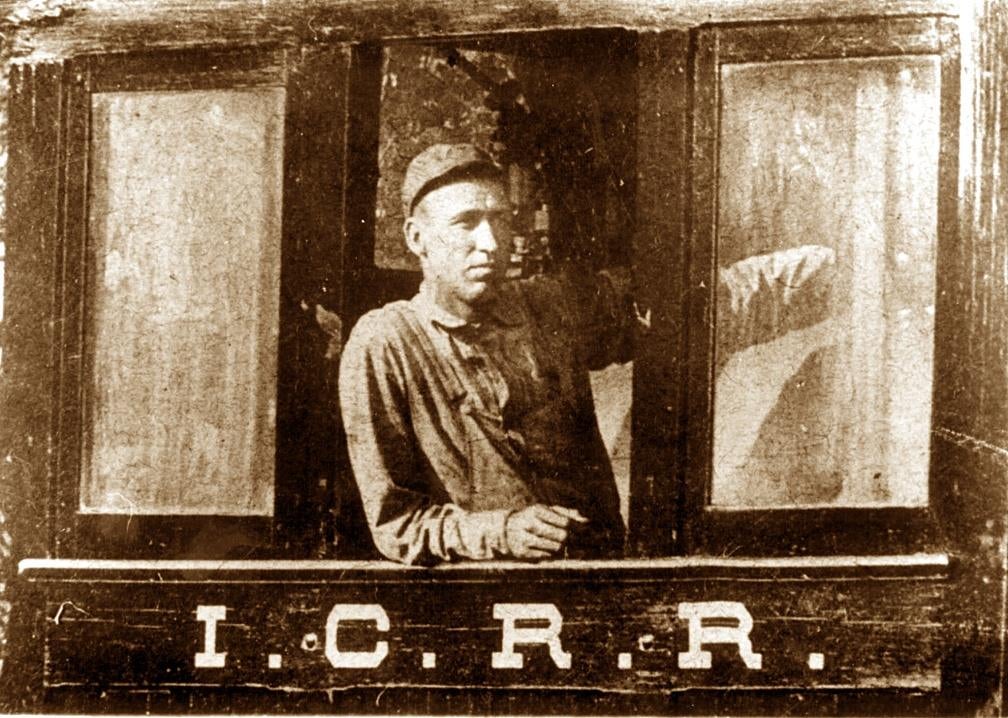FreightWaves Classics is sponsored by Old Dominion Freight Line — Helping the World Keep Promises. Learn more here.
“Casey Jones, you better watch your speed.” The line from “Casey Jones” by the Grateful Dead might be iconic, but it’s more fun than factual.
Tuesday was railroad engineer Casey Jones’ would-be 159th birthday. His life was cut short at 37 in a railroad crash. The infamous accident eventually made him a folk hero, with numerous ballads written about him throughout history, including tunes by such greats as Johnny Cash.
John Luther Jones got the nickname Casey from his roots in Cayce, Kentucky, where he spent most of his childhood. He began his career in the industry as a telegrapher at Mobile and Ohio railroad at 15 years old, according to Biography.com. In 1884, Jones was promoted to flagman and moved to Jackson, Tennessee. There he met his wife. Joanne “Janie” Brady, with whom he had two sons and a daughter.

He moved up the ranks during the heyday of the railroad and eventually secured a job as an engineer at Illinois Central Railroad. It was while he held this position that Jones died on April 30, 1900, in an act of self-sacrifice.
Legend has it he enjoyed the speed of the rails and was an aficionado of the whistle. On this particular day he was operating the train at high speeds to make up for lost time, something he gained a reputation for. He was well known for his ability to keep trains on schedule but sometimes at dangerous speeds.
In an unfortunate last-minute decision, Jones volunteered to cover for a sick co-worker, which put him on a double shift. He headed southbound on Engine 382 along with company fireman Sam Webb, with numerous passengers on board, according to the Casey Jones Museum. They were an hour and a half behind but Jones was determined to make it on schedule and pushed the train to almost 100 mph.
Turning into Vaughan, Mississippi, Webb spotted a freight train stalled on the tracks ahead and called out a warning to the engineer. Jones then made his final move, which would go down in history.
He told Webb to abandon the train and used his strength to keep one hand on the brake and the other on the whistle to warn others ahead. The trains collided as Jones attempted to hold on to the brake.
The damage to both trains was severe. However, everyone survived but Jones, who died from a throat laceration, still clinging to the brake and whistle. It is likely that his decision to remain on the train saved the lives of everyone else on board.
‘The Ballad of Casey Jones’
The heroism of Casey Jones might not be known today if not for a mourning co-worker on the Illinois Central Railroad. Engine wiper Wallace Saunders wrote the folk song “The Ballad of Casey Jones” not long after the accident. The song was performed by many others and sold to vaudeville artists. Various versions arose throughout history, with Johnny Cash’s version being one of the closest in historical accuracy in terms of facts and to the original ballad in recorded modern music.
While the Grateful Dead’s “Casey Jones” is a well-known piece of American music history, it is not a version of the original ballad and is historically inaccurate. One of the major plot point differences is the song’s statement that Jones was on drugs at the time of the crash.
According to Jones’ widow, the ballad included inaccuracies as well. An unflattering line in a later version of the folk ballad painted her wrongly as unfaithful. It said Casey Jones’ children shouldn’t cry because they “had another papa on the Salt Lake Line,” according to a Time magazine article.
Jones’ widow became adamant about keeping the record of Jones himself and his story straight. In 1928, she went as far as filing a lawsuit against a movie studio that tried to make a film on Casey Jones without her involvement or permission. She often spoke out against articles misrepresenting any detail of her husband’s narrative. Time noted that she had written a letter to its editor in regard to an article that had misidentified the number of the train he was on. She warned the publication never to write about Casey Jones again.
Janie Jones died at age 92 on Nov. 21, 1958, having never remarried.
reightWaves Classics articles look at various aspects of the transportation industry’s history. Click here to subscribe to our newsletter!
Have a topic you want me to cover? Email me at [email protected] or follow me on Twitter.











Jack Gurner, Water Valley Casey Jones Railroad Museum
The problem with this story and many that have appeared before is their is a tendency to attempt to make a hero out of Casey Jones. While Jones was well respected by his peers, he was hardly a hero. His passengers would have never been in danger if had not been breaking the rules and running too fast that night. He was showing off by trying to make up the one hour and thirty-five minutes.